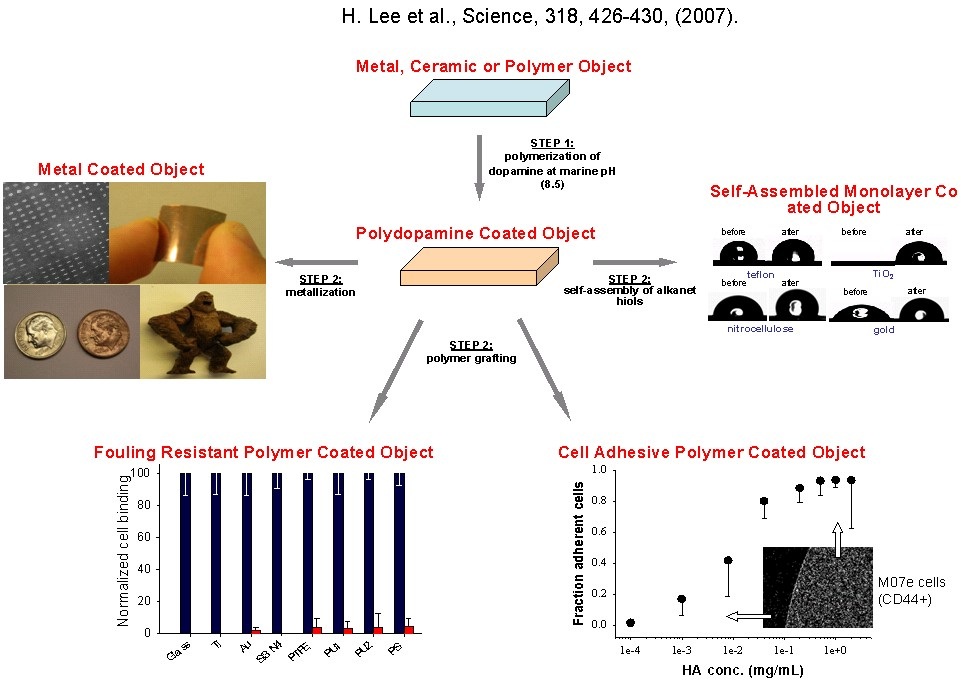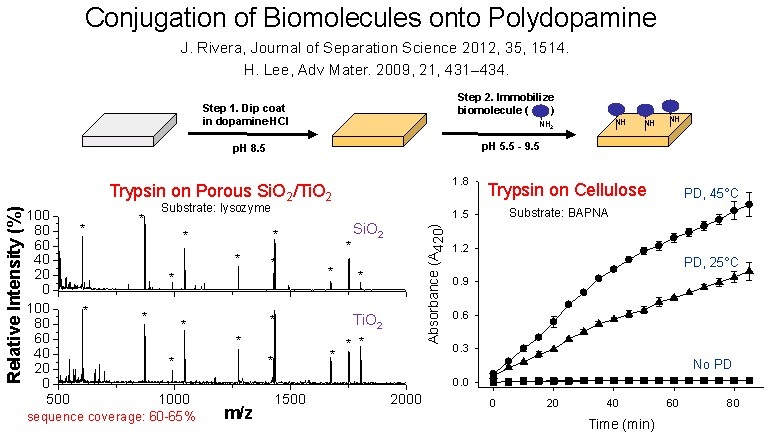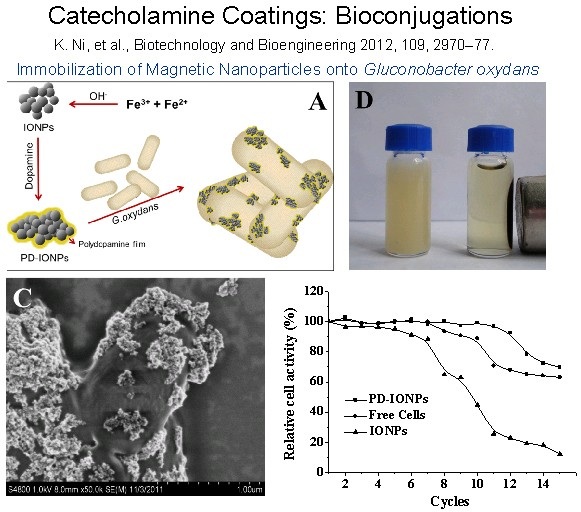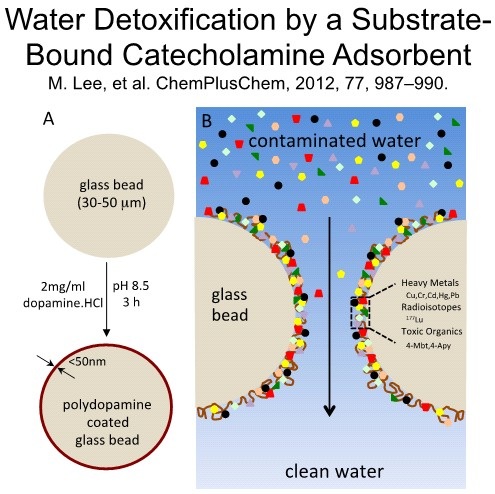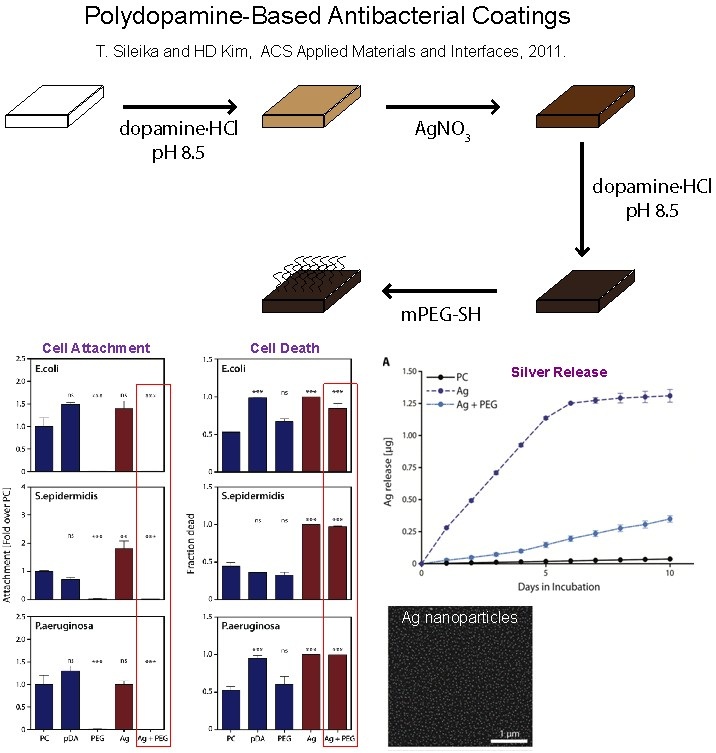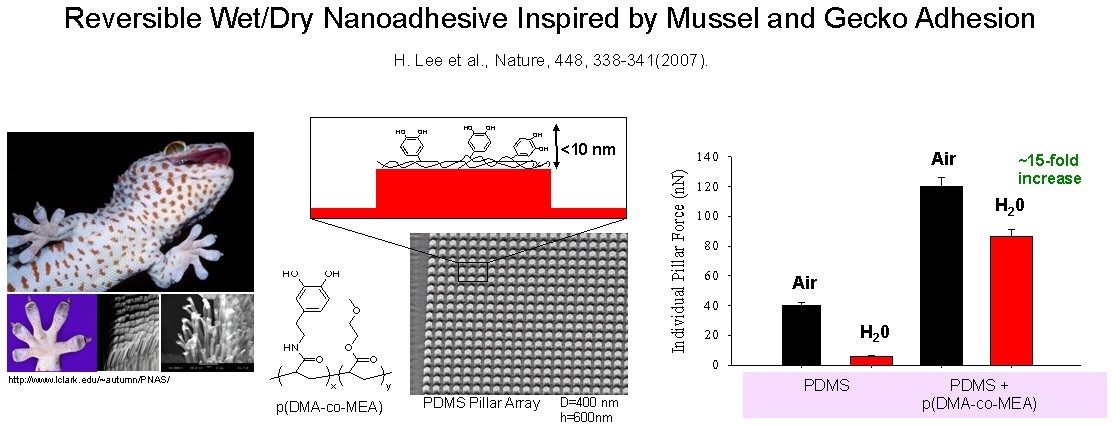Some examples of practical applications of polydopamine-based coatings being pursued by our group include:
- Enzyme immobilization. The reactivity of polydopamine for nucleophiles allows for facile conjugation of biomolecules onto surfaces. We have shown this for trypsin in a conceptual manner, and more recently onto porous chromatographic supports for proteomic analysis (Figures).
- Biocatalysis. Here we have exploited polydopamine coated magnetic nanoparticles for enzyme immobilization, increasing enzyme stability and allowing for convenient recovery of enzyme and isolation of product. Recently we also exploited this method for attaching magnetic nanoparticles to cell surfaces, facilitating the use of cells for biocatalysis (Figure).
- Water Detoxification. The high affinity of polydopamine coatings for heavy metals can be exploited for removal of heavy metals from water. Implementation of this concept is simple, consisting of coating solid support (beads or porous media) with polydopamine followed by exposure to contaminated water. The polydopamine coating extracts heavy metals from the medium and can be removed and regenerated in a facile manner.
- Antibacterial Coatings. In this approach, polydopamine was used as a primer to deposit silver nanoparticles, which have broad spectrum antibacterial properties. Polymer surfaces were first coated with polydopamine and then immersed in a silver salt solution (AgNO3). Spontaneous deposition of metallic Ag nanoparticles onto the polydopamine coating occurred due to the reductive capacity of polydopamine. Further grafting of PEG yielded a coating which combines both fouling resistance (PEG) and antibacterial (Ag) properties.
We have developed a number of other catechol/catecholamine polymers for surface modification. In one case, the strategies of mussel and gecko adhesion were combined in a unique way to form a temporary adhesive capable of adhering to wet or dry surfaces in a reversible manner. The fibrillar structures found on the gecko foot hairs were mimicked by fabricating an array of pillars on an elastomeric material using nanolithography. The surface of the structured silicone elastomer was then coated by a thin film of mussel mimetic polymer (Figure). This tape-like adhesive material, which borrows the geometric pillar structure from the gecko and the wet adhesive surface chemistry from the mussel, was capable of reversible attachment to surfaces in both dry and wet conditions.

